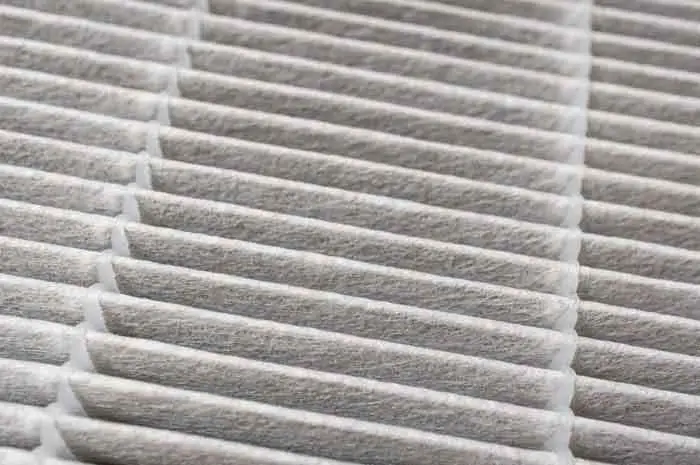How to Build Immunity to Cat Allergies? [ANSWERED]
As an Amazon Associate, I may earn from qualifying purchases at no extra cost to you.

It’s almost worse than heartbreak when you come across a cute kitty, maybe a large tabby, come close to give it a kiss and a pet, and find yourself sneezing and scaring the poor thing away!
Oops – you’re allergic to cats, doomed to never pet Garfield in your whole life. Or are you?
Is there perhaps a way to build up an immunity to cat allergies?
In this article we’ll discuss if it’s possible to build up an immunity to an allergen, and if you can finally say goodbye to your sneezing fits whenever a cute cat is around.
More...
What is an allergic reaction?

Allergic reactions can stem from something as simple as an itch in your mouth to something as severe as anaphylaxis, which is a dangerous condition that demands medical attention.
Common allergic reactions include:
For people suffering from cat allergies, you may find your eyes watering or you may start sneezing whenever you’re in the vicinity of one.
What causes an allergic reaction?

Typically our body reacts in several ways to foreign substances that it deems harmful.
When we get a fever, a cold, and even when we sneeze, it means our body is trying to expel whatever foreign material has entered it.
Strangely enough, this is also what happens to us when we have an allergic reaction. The body creates antibodies that identify a particular substance as harmful – even when it really isn’t!
This is why people suffer from allergies – one person may be allergic to peanuts, and another may be allergic to pollen.
Essentially, their bodies have created antibodies that react to peanuts and pollen respectively, causing them to have allergic reactions.
Why am I allergic to my cat?

While cat fur has often been pointed as the perpetrator of cat allergies, it is in fact cat dander that causes a reaction in allergic people.
Cat dander is essentially a cat’s dead skin cells, which is sloughed off whenever a cat licks itself clean. It then finds its way into the air you breathe.
Interestingly enough, the protein found within cat dander that makes it an allergen to some people can also be found in a cat’s saliva, so while it may be rude, you’re better off declining kisses from your feline friend.
Cat dander is only 1/10th the size of dust mites, so you’re never going to be able to physically clean it up and expel it from your home.
Because it is airborne, cat dander can be inhaled through the mouth, and thus enter the lungs.
This spells danger for those who are allergic and asthmatic, because it will almost always cause an asthma attack in conjunction with your allergic reaction.
You can also just as easily inhale cat dander through your nose, which will lead to sneezing, nasal congestion, and even postnasal drip.
This kind of reaction is called allergic rhinitis.
If cat dander falls on your skin, or if your little pet decides to lick you, this can also result in an allergic reaction.
You can break out into an itchy rash, or even worse, develop eczema if your little friend licked you on the face!
So, how do I build an immunity to cat allergies?

Is it possible to build up an immunity to something that you’re allergic to?
Because it’s possible for you to develop allergies even as an adult, it’s also possible for you to lose them!
That’s right, you can say goodbye to your coughing fits and sneeze attacks with a little bit of work.
The key to developing immunity is tolerance.
When you’re allergic to something, your body is intolerant of that substance, thus the violent response to its entering your system.
So what can you do to build up tolerance to cat dander?
The simple solution to this is increased exposure. Increased exposure follows the same principle as taking allergen shots.
Through introducing your body to the allergen, eventually you build immunity. This process is called immunotherapy.
How does immunotherapy work?

Allergen shots are typically taken over the course of a long period – usually around three to five years.
You’re injected with a small amount of the substance you’re allergic to – in this case, cat dander – with the amount increasing with each shot.
You’ll get a small allergic reaction, of course, but over time, your body will be desensitized to the allergen, and voila – you’ll stop getting allergic reactions at the mere sight of a cat!
You should consider allergen shots if your current allergic medications aren’t working for you, or if they’re interfering with another medication that you’re taking.
When should I avoid getting immunotherapy?

However, allergen shots aren’t recommended for those who have asthma, as they could experience a severe attack after being deliberately exposed to the allergen.
Pregnant women, are also discouraged from starting immunotherapy treatment during pregnancy.
Women who have already started the treatment even before getting pregnant aren’t encouraged from discontinuing the therapy, though, as stopping the treatment midway could lead to worse allergic reactions once the treatment is picked up again.
After finishing your allergen shots, you should find yourself able to live with your furry friends again.
Is immunotherapy possible without allergen shots?

You can try and build up immunity on your own at home simply by exposing yourself to your cat.
Research suggests that this builds up tolerance with your allergic reactions, and while they may not disappear completely, soon you’ll find yourself unbothered by small sniffles and occasional sneezes.
How to manage cat allergies?
What if immunotherapy didn't work, or if you need a short term solution to manage your symptoms? Well, you have several options:
1. Create an “allergy free” zone by isolating allergens

Have certain rooms out-of-bounds for your cat. This is especially applicable for a good night’s rest. Allergens can especially disrupt your sleep, so strictly keep your cat out of your bedroom or specific rooms for an allergy-free “haven”.
2. Get on a cat bed!

If your beloved feline loves snuggling up on something soft, reserve a dedicated bed for it to reduce the build-up of dander on your furniture. Here's where you can get one.
Your bedding and other fabrics like carpets can easily become a trap for allergens that are typically tough to dislodge. Hence, keep your cat off these pieces.
In addition, make sure to wash the cat bed often with hot water.
3. Bathe your cat regularly

Doing this once every 1-2 weeks can significantly help to reduce the allergy load your cat carries around.
Some cats hate baths, so you could also bring your cat to the groomer. Different cats carry different dispositions, so this one’s really up to you.
Alternatively, if bathing is totally out of the question, you can try wiping your cat with fragrance-free hypoallergenic baby wipes!
4. Use HEPA filters

High-efficiency particulate air (HEPA) filters are designed to remove allergens from the air. We go into great detail here on why HEPA air purifiers are perfect for cat allergies.
5. Clean your home regularly

This includes washing articles such as rugs, carpets, curtains, and couch and pillow covers. High-efficiency vacuum cleaners or central vacuums can also help to remove dust and reduce allergen levels.
Do note that they are only effective if you use a HEPA filter or double bag.
6. Take medication

Anti-histamines in particular can significantly help to manage your allergy's symptoms.
Nasal symptoms can be treated with oral anti-histamines or other medications like Zyrtec, Allegra or Claritin, eye symptoms with antihistamine eye-drops, and respiratory symptoms with inhaled cortisteriods or bronchodilators. Always consult your medical professional before taking any of these medications.
7. Use preventive measures

If you want to pet or hug your cat, wear long sleeves. Arm sleeves like these have worked pretty well for me too. This minimizes your skins contact with dander while still allowing you to get the nice serotonin boost from loving your cat.
In addition, wash your hands immediately after with soap or water.
Conclusion - How to Build Immunity to Cat Allergies?

So there’s your answer: if you’re allergic to cat dander, then you’ll be pleased to find that building up an immunity is actually possible.
All you need is the help of a doctor, and, if your symptoms are manageable enough, then all you need is your little feline friend!
Remember to check with your doctor first if taking allergen shots is possible in your situation, since people who suffer from severe reactions to allergens are generally discouraged from taking allergen shots.
